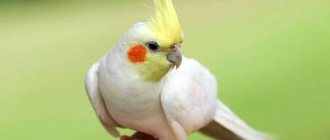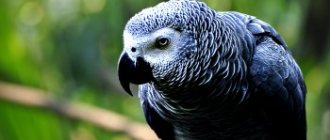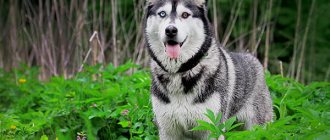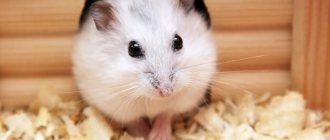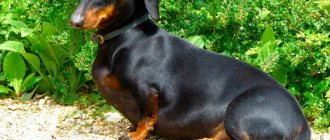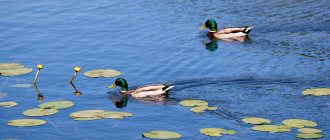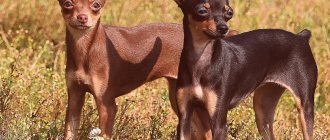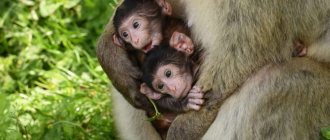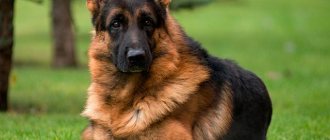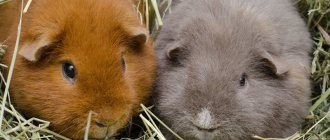The cockatoo is a very expressive, charming and charming bird. She is recognized by the whole world as smart and sociable. This species loves to be the center of attention and attracts people in every way, which wins their hearts. And for this reason, many people want to buy them. In addition to the peculiarities of feeding and caring for poultry, you need to know about life expectancy, its cycles and ways to extend it.
Cycle of life
Like every animal, a parrot of this species has its own life cycle. It is divided into nesting (reproduction) and post-nesting periods, and this does not depend on the place of residence.
Life stage during reproduction:
- Showing - that is, the bird develops a certain behavior that helps attract males or females. This can be expressed in strong activity, frequent singing, and the like.
- Nest building. If the bird is free, then after finding a companion for the mating period, the cockatoo begins to equip its nest for hatching eggs. That is, it shapes it so that there is enough space for everyone, and insulates the home using all available methods.
- Incubation. During this period, the eggs hatch and are warmed by their warmth.
- Feeding chicks. After the chicks hatch, both male and female spend most of their time hunting to feed their young.
Next comes the post-nesting period, which includes molting of feathers, as well as migration. The last point for this feathered animal is not taken into account, but molting is present.
Even if she grows at home, the nesting period cannot be avoided. Therefore, there are three ways out of the situation: mating two parrots, suppressing the reproductive instinct with the help of veterinarians, or ignoring it.
Necessary items and devices
Photo: https://pixabay.com/photos/sulfur-crested-cockatoo-1116179/
Cell selection
When purchasing a cockatoo, you initially need to understand that this is a rather large bird, and it will need a lot of space. Therefore, the pet’s home should be spacious. If the parrot can freely climb around the cage and spread its wings when desired, this will help it remain not only healthy, but also cheerful. And the bird’s good mood will certainly make its owner happy.
The optimal cage size for keeping a large parrot is 1.7 m × 1 m × 1 m. Medium parrots can be kept in a cage measuring 0.7 m × 0.5 m × 0.5 m.
The bars of a parrot's house should be made of solid metal and strong enough so that the pet does not easily bite through them.
Preference should be given to a cage with a retractable bottom; this little detail will greatly facilitate the process of caring for the bird.
If you plan to keep not one bird, but two or more, then you will have to build an aviary.
Home improvement
Necessary items that need to be purchased along with the cage are perches, a water bowl and a feeder.
Preference should be given to perches made from more durable wood species. They should be placed so that the pet sitting on the perch does not rest against the cage with either its head or tail.
The diameter of the perch is also of great importance. For large parrots, the diameter of this object should not be less than 5 cm. For medium parrots, a stick with a diameter of 2.5 cm is enough.
That is, the toes gripping the poles should not close.
Particular attention should be paid to the lock that locks the cage. In no case should the cockatoo parrot open it easily and, at any desire, be free.
Water, drinking bowl, feeder
The drinking bowl and feeder must be made of durable material, otherwise the parrot will break them very quickly.
Photo: https://pixabay.com/photos/sulfur-crested-cockatoo-parrot-3923181/
If everything is clear with food, the bird is quite gluttonous and requires it in sufficient quantities, then with water it is not so clear. If your pet hasn’t drunk all the water in a day, what should you do? Should I leave it or pour it fresh? The answer is simple: the water must be changed every day without fail, and the drinking bowl will also have to be washed every day.
Before giving water to a cockatoo, it must be left for at least a day to allow substances hazardous to health to evaporate.
You should also not give preference to boiled water; there is nothing healthy in it.
Lighting
An important issue is the placement of the cage. It has been proven that birds simply need the sun's rays vitally; they increase the body's resistance to disease and enhance metabolic processes in the blood.
You need to place your pet in the brightest room, preferably with a southern orientation, where the temperature will be from 18 to 20 degrees.
In the summer, parrots should spend quite a long time in the sun. And to prevent them from overheating, one side of the cage needs to be shaded.
In winter, if there is a lack of sunlight, it is recommended to use special lamps for additional illumination.
Ideal air humidity is 75-90 percent.
The cockatoo parrot is very sensitive to odors. The smoking owner will have to go out onto the landing so as not to injure the pet with an unpleasant odor. And the kitchen is not the best place to place a cage.
It is imperative to ventilate the apartment daily; parrots benefit from fresh air.
Toys
If you decide to make your cockatoo happy and buy him toys, you need to choose them based on the following requirements:
- durability of items intended for games;
- plastic or other material from which the toy is made must not contain harmful substances or impurities;
- toys should smell nice.
You should give preference to things that will help your bird develop. For example, while playing with pyramids, the cockatoo parrot will learn to reason, it will begin to catch balls and throw them again, and it will try to untie knots. When playing with rattles and bells, the bird will definitely begin to repeat the sounds that these things make.
If you teach through play, be sure to praise your pet for any success and treat him with a treat.
Influence of factors
Most die before they grow old. This is influenced by two main factors: natural and human.
Natural:
- The ecosystem that surrounds.
- Various types of diseases - mainly can catch diseases from another animal, which may simply carry bad infected cells. The cockatoo has good immunity, but it is focused on its natural fauna.
- Bad food. In the natural environment, this could be malnutrition or bad food.
- Natural disasters.
- Predators. These cute birds are susceptible to attack by predatory animals, as they attract a lot of attention. For this reason, life expectancy is significantly reduced.
Human factors:
- In some countries, their meat is considered a delicacy; this is one of the causes of death.
- The main factor in the mortality of this species is smuggling. They are caught and sold illegally, which greatly affects their well-being; some do not survive transportation to their next owner. And those who did survive could fade away in a couple of months in the wrong hands.
- Homemade food. At home, the cause of premature death may be poor and low-quality food. When purchasing a parrot, it is imperative to study the nutrition thoroughly and select the required standard and quality products.
Causes of death
Death occurs for various reasons. Reasons may be:
- Diseases. Various ailments that are caused by stress, are congenital or appear during the life of a parrot can be fatal if measures are not taken in time.
- Injuries and other damage to health. If it flies incompetently, flies out of a window or window, or gets electrocuted, a cockatoo parrot can get injured, which will lead to death.
- Moral condition. A bird with whom the owner does not speak begins to get bored and becomes stressed. The state of stress in pets is somewhat different from that of humans. Stress often leads to the formation of diseases; prolonged exposure to it will lead to death.
Lifespan
In a comfortable home environment where a cockatoo parrot lives, it can live on average from 60 to 70 years! But it is worth considering that care must be good and of high quality.
At home
There are several points that must be followed:
- High quality homemade food. The diet must include mixtures of grains, fruits, and always vegetables and herbs. In veterinary clinics and pet stores you can learn more and create a balanced diet. They will definitely tell you about the daily norm and give a lot of practical advice on care and food combinations.
- A prerequisite is a large, spacious and clean cage. Cockatoos do not particularly like very free and confined spaces. For this reason, the cage must be such that it can accommodate all the necessary equipment for life (food tray, swing, drinking bowl, etc.), but at the same time he can open his wings without difficulty. There should be enough toys and fun in the cage, otherwise the birds will be sad without fun. It is also necessary to let her out every day to fly around the apartment for a long time.
- The owner is required to pay a lot of attention. These birds become very attached to their owner and, without proper attention, begin to feel sad, and in the future there can be quite sad consequences.
All these factors greatly influence life expectancy. Absolutely all factors should be taken into account, otherwise the parrot will be stressed. And stress contributes to poor health.
In wild nature
In the wild, they may not live all the years intended for them. At best, it can last up to 50 years, but the average lifespan reaches only 40 years. A lot of factors influence the life of a bird:
- Predatory animals. As already mentioned, the birds are quite noticeable, so in the wild they are good prey for predators.
- Bad food. Sometimes any animal has a day when there is practically nothing to eat. This greatly affects your well-being.
- Various types of diseases to which they are susceptible.
- Forest fires.
- On hungry days, cockatoos can raid fields. And farmers, to protect their crops, can spray toxic substances. And thus birds that make raids are poisoned by these substances.
How long does a cockatoo live in the wild?
The free life of a parrot involves daily risk. Birds require great luck to overcome difficulties and live long. It is impossible to say with certainty how long a wild cockatoo parrot lives. An accurate count is impossible, because ornithologists observe individual individuals. Theoretically, the approximate age of old age for a cockatoo is 50 years, and its average lifespan in nature is thirty years.
What determines lifespan in nature?
The natural habitat is fraught with many dangers for parrots. In addition to epidemics of avian diseases, life expectancy is influenced by natural phenomena and human activities.
Nature
In nature, all living things obey the law of natural selection. In the struggle for survival, the strongest wins. A fight with a predator usually ends disastrously for a cockatoo: an intelligent bird, but not adapted to battle, dies from its injuries. Helpless chicks are stolen from the nest by snakes. During a drought, parrots face the problem of hunger and the need for long flights. Not all birds can bear such a load. And how many of them die in forest fires!
Human
Fleeing from hunger, cockatoos fly to the sown fields. Fearing poisoning, farmers spray plants with poisons and shoot birds. There is no worse enemy for a cockatoo than man. Aborigines sometimes kill birds for tasty meat. Poachers hunt parrots for profit and set up snares and traps. Caught birds are transported to other countries without worrying about transportation rules. It is impossible to even imagine how many prisoners die in difficult conditions.
Life extension
It is necessary to choose the right diet. A mandatory item is cereals mixed with fruits or vegetables. When prescribed by a veterinarian, give special vitamins. Rarely give harmful foods, and in the best case, don’t give them at all.
Nutrition
It is better to purchase grains and cereals of good quality. Fruits must be fresh, washed and finely chopped so that the bird can swallow normally and not choke. Select fruits based on the diet and, at best, those that she would eat in her natural environment. Vegetables should also be washed and fresh. The cutting methods are the same as for fruits.
Conditions
- Nice loose cage. The bird must fit into it and at the same time fully open its wings and stretch out. She does not like confined spaces, so it is necessary to let the bird fly around the house every day.
- Buy toys and be sure to play with the parrot yourself.
- During these free flights, remove all threats to the life of the animal - other domestic animals (dogs, cats). The cockatoo is very friendly, so without live communication she begins to get bored.
- Give only positive emotions.
- Avoid angry shouting.
Care
Proper bird and cage care is essential. The cage should always be clean, just like the bird itself. It is better to wash and clean the cage three to four times a week. But as for washing the cockatoos, problems may arise here. Not every parrot will love to bathe. Therefore, special care is better.
With proper upbringing, the bird will get used to bathing, but this should not be done often. This way you can wash off the protective cover on the plumage. It is better to clean your parrot as it gets dirty. Be sure to avoid drafts so that the bird does not get sick.
Recommendations for purchasing a cockatoo parrot
When purchasing a cockatoo, you need to consider the following:
- The bird must be healthy and the seller must provide all health certificates.
- Every buyer must know that they are very sociable, so it is necessary to mentally prepare for the fact that there will be a lot of “screams” in the apartment.
- Be sure to find out the age of the parrot, its habits (if the bird is an adult) and dietary habits, because nutrition is individual for everyone (allergic reactions, how food is digested, and so on).
- The documents must indicate which subspecies the animal belongs to.
How long parrots live at home depends entirely on their owners. Therefore, if you want your favorite bird to live longer, watch its diet and then its lifespan will increase many times over.
Previous
Cockatoo Cockatoo parrot and its description
Bird domestication
The first tame parrots appeared in Europe after the campaigns of Alexander the Great. The birds were popular and were kept in special cages made of ivory and silver.
In some countries, parrots were even considered sacred due to the fact that they could speak with a human voice.
Teachers were hired to teach strange birds how to talk. In those days, a parrot that knew a lot of words was valued more than a slave.
The fall of Rome had a negative impact on birds; nothing was heard about them for a long time. And only after the discovery of Australia and America and their subsequent colonization, bright birds appeared again in Europe. They came to Russia quite late: only in the 17th century.
Communication prolongs life
Birds are very jealous of lack of attention. If he lacks communication, he may acquire bad habits. For example, biting is unexpected and painful. This behavior needs to be stopped at the very beginning. In general, a parrot is like a child - it requires attention and education. In other words, if a person decides to keep a cockatoo, it is necessary to prepare properly.
Many people truly enjoy interacting with cockatoos. If the bird is happy with the person, then he will be very friendly, and you can easily find a common language with him. The cockatoo will make everyone laugh and delight with his tricks. No wonder it is so popular. He will surely become a favorite of the whole family. We must not forget that these parrots live a long time. By purchasing a cockatoo, a person receives a full-fledged family member with his own habits and character.
Pros and cons of keeping birds
Pros of keeping a cockatoo:
- no odor;
- birds do not require walking;
- Cockatoos very rarely get sick;
- live long;
- a bird can be taught not only to speak, but also to answer questions, give a paw, and respond to a name.
Cons of cockatoos:
- excessive attachment to the owner;
- if offended, a parrot can bite, and hard;
- when traveling around the house, curious pets can cause serious damage to a person’s habitat;
- they will definitely peck indoor plants: leaves, stems, flowers. And they will even scoop out the soil from the pot, along with the roots, of course;
- Cockatoos are quite noisy; if they decide that they are not receiving enough attention, they will definitely begin to demand it, and very loudly;
- a jealous bird can harm a small child;
- The cage will have to be cleaned daily.
The cockatoo parrot is an early bird. Sunrise is a wake-up call for him.
Covering the cage with a dark cloth to sleep longer is unlikely to work. In this case, the owner will be awakened not by joyful chirping, but by a protesting cry.
Description of the species
Cockatoos are large birds, they can reach sizes from thirty to sixty centimeters, and gain weight from 300 to 1200 g. The birds have a long beak, curved down, and it looks massive against the background of the head.
Birds can use it to bite through the cage bars if they are made of wood or soft wire. Under natural conditions, they easily break down the hard shells of nuts and seeds. The tongue helps extract grains from fruits. At the tip it is covered with a black cornea and has a hollow, which the individual uses as a spoon.
Description of the cockatoo parrot
Not only the beak is a distinctive feature of this species, there is another striking feature - the crest on the head. It consists of elongated feathers located on the crown and back of the head.
The crest differs from the main color of the individual and can consist of white, black, pink and yellow feathers. There are no green feathers on the head; this is also a specific feature of the species.
Females and males are similar in color, but they differ in size and weight.
Cockatoos don't fly very well, but they climb trees and move on the ground perfectly.
Health and illness
Any living creature can get sick, and parrots are no exception. Most often, diseases occur due to improper care. The most common are the following: intestinal and lung diseases, parasites, feather pulling.
It is unlikely that you will be able to determine on your own what the bird is sick with. Therefore, you should not delay a visit to the veterinarian if your pet exhibits the following symptoms:
- loss of appetite;
- sneezing and discharge from the nostrils;
- sharp screams;
- change in color and appearance of excrement.
If you do not treat your parrot, it may die.
A bird can also die from boredom during a long separation from its owner.
Species diversity
Photos show the variety of shapes and colors within the genera. Black - a large gloomy bird with a huge crest and red cheeks looks ominous, and its behavior is wild and independent. Mourning cockatoos are not very popular among lovers of tropical birds due to their discreet gray plumage and inconspicuous crest, so the most popular in home keeping remain:
- White cockatoo
A large white parrot with a tuft is the most sociable and talkative, a restless screamer and trickster. He remembers few words, but reproduces them clearly and willingly. Considered the most trainable.
- Helmet-bearing
Helmet-bearing is a motley gray-white beauty with a bright red head. Not too talkative, but very nice.
- White-tailed (mourning)
White-tailed (mourning) is an aristocratic creature with inimitable artistry. Snow-white plumage and a long crest give it a respectable appearance.
- Yellow-crested
Yellow-crested - a large (up to 1 kg) white merry fellow with a lemon crest, is also among the excellent students in training and imitating sounds.
- Pink (gala)
Gala or pink is a delicate, medium-sized (35 cm), beautiful bird in a light gray “tuxedo”. The chest, belly and cheeks are crimson in color.
- Inka
Cockatoo Inka is an unusually spectacular white parrot with a pastel pink head, neck, chest and abdomen and a stunningly colored crest reminiscent of the headdress of ancient Indians. Unfortunately, the export of this bird outside of Australia is prohibited.
- Moluccan
Moluccan - pale pink, with orange ripples, medium size (800 g). He hardly speaks, but he looks very smart.
- Corella
Corella is the smallest (300g) and affordable. The plumage is motley-gray with waves and streaks, white or yellowish. An indispensable attribute is a lemon-yellow head and orange “blush” on the cheeks. Doesn't speak at all, but is very affectionate towards his owner. Communicates with a shrill whistle.
Habitats
The cockatoo lives in Australia, New Guinea and New Zealand, the Philippines and Indonesia. This bird lives both near water and in dry areas. Some species like large open spaces, while others prefer sweltering mangrove swamps.
The Australian mainland boasts the greatest diversity of species, although in dry, lean years, when flocks of birds make devastating raids on farms and eat up all the crops, there is nothing special to brag about.
Habitats of the Cockatoo parrot
